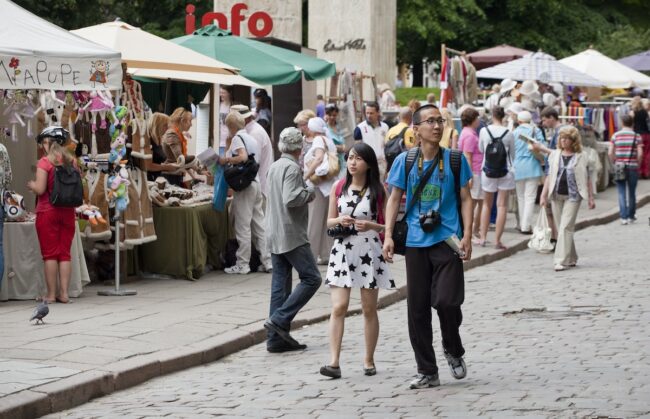Post-pandemic price surge boosts domestic tourism in Estonia
Text Mark Taylor Photo Andrei Chertkov
The COVID-19 pandemic has significantly altered tourism patterns in Estonia, leading to a rise in accommodation prices and a notable increase in domestic tourism.
Between 2018 and 2023, the average amount spent on trips abroad by Estonian residents grew by 43 per cent, with travellers in 2023 spending more on such trips than before the pandemic. In 2018, the average amount spent on trips abroad was 838 euros, whereas in 2023, this figure had risen to 1,150 euros. The most significant change, however, was seen in business travel, where average spending soared from 798 euros in 2018 to 1,280 euros in 2023. Trips to visit friends and relatives consistently had the lowest average expenditure, rising modestly from 386 euros in 2018 to 537 euros in 2023.
Sigrid Saagpakk, an analyst at Statistics Estonia, attributes the rise in travel costs to the aftermath of the coronavirus crisis. “Travelling has become more expensive in general,” Saagpakk remarked. Domestic trips, though less costly than international ones, also saw a rise in average expenditure. In 2023, Estonians spent an average of 179 euros on domestic trips, compared to 125 euros in 2018. Interestingly, in 2022, domestic business trips had higher average costs than holiday trips, a trend Saagpakk suggested was due to post-pandemic adjustments, as employers resumed face-to-face meetings after the relaxation of restrictions.
In addition to increased spending, the cost of overnight accommodation in Estonia has risen. The average cost of a guest night in 2023 reached 46 euros, up from 39 euros before the pandemic. During the height of the pandemic, in 2020 and 2021, lower occupancy rates caused the average cost to drop to between 32 and 34 euros. The most expensive overnight stays continue to be in the capital, Tallinn, followed by Tartu. “The price differences across counties depends on the mix of luxury and budget accommodation, as well as occupancy rates,” explained Helga Laurmaa, a leading analyst at Statistics Estonia.
While the number of foreign tourists visiting Estonia has not yet returned to pre-pandemic levels, the share of domestic tourists has grown significantly. Before the pandemic, in 2018 and 2019, over half of the guests at accommodation establishments were foreign tourists. However, after March 2020, when travel restrictions were introduced, domestic tourism provided a vital boost to the industry. Laurmaa highlighted that in July 2020, the number of domestic tourists surpassed 2019 levels, even though many accommodation establishments had to close temporarily earlier that year.
Despite this surge, the total number of domestic overnight trips has yet to recover fully. In 2018, domestic overnight trips numbered 4.4 million, but they dropped to 2.1 million during the pandemic. In 2023, the figure stood at 3.2 million, showing a gradual recovery but still below pre-pandemic numbers.
Harjumaa county, home to the capital city of Tallinn, remains the most popular destination for foreign tourists. Tallinn’s Old Town, a UNESCO World Heritage site, continues to draw international visitors. Other popular tourist regions include Pärnu, known for its beaches, Tartu with its vibrant university atmosphere, and Kuressaare on the island of Saaremaa, which is famous for its episcopal castle.
However, some regions have seen a decline in international visitors. Ida-Virumaa, once a popular destination for Russian tourists, has experienced a drop in foreign guests due to restrictions on inbound tourism from Russia. Meanwhile, counties such as Jõgevamaa, Järvamaa, and Raplamaa see fewer foreign tourists staying overnight. Laurmaa explained that due to Estonia’s small size, tourists often visit these areas but continue to other destinations without staying overnight.
To learn more about this and similar topicsAccommodation price Estonia Covid-19 impact on travel Estonia Travel Statistics Post-pandemic Travel Statistics Estonia Tourism in Estonia Travel Spending










